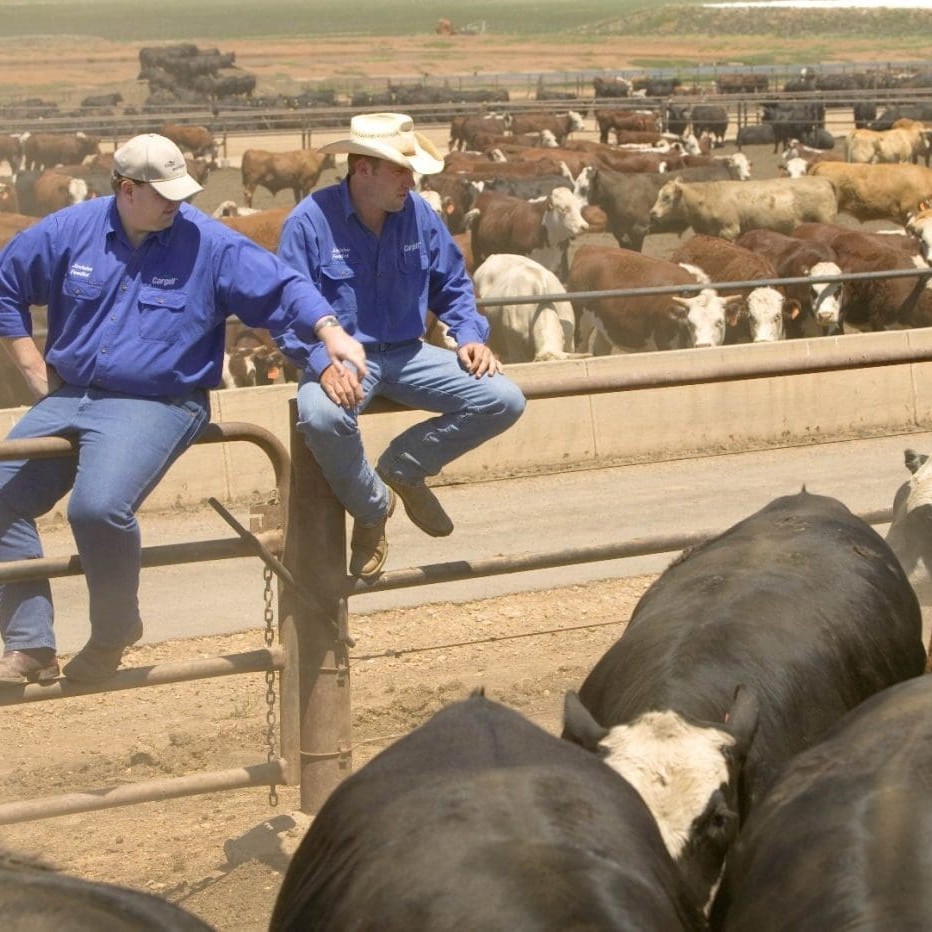 Profitability on grainfed cattle has slipped back into negative territory in Beef Central’s latest breakeven calculation compiled yesterday.
Profitability on grainfed cattle has slipped back into negative territory in Beef Central’s latest breakeven calculation compiled yesterday.
A budget calculation based on our standard 100-day grainfed beast placed on feed yesterday and closing-out in the first week of March next year suggested a minus-$30 trading result.
That has slipped from a +$1 trading result in the last calculation on October 27, and a +$6.75 figure a fortnight before that.
In the context of some of the big losses seen over the past six months on the proposition of buying, feeding and selling for the 100-day grainfed market, the latest result is still only modestly disappointing. In mid-year the trading result figure was -$89.
An analysis based on yesterday’s spot market for inputs suggested a breakeven figure of 406c/kg dressed weight, for 100-day grainfed steers ex-Darling Downs, going on feed yesterday and closing-out around March 2.
That’s up 11c from 395c in our last breakeven on October 27 – a 2.5pc increase, primarily due to higher feeder cattle prices.
It should be pointed out that while Beef Central’s model is standardised to maintain consistency throughout the year, some might argue that the latest budget could be adjusted for anticipated better cattle performance heading into summer.
Many feedlot rations are now moving on to predominantly white grains, and recording lower levels of respiratory disease. In some lots, that might be worth 5c/kg, meaning that if it was applied, that would lower the close-out breakeven figure to about 400c.
Rise in feeder price
For today’s calculation, we have added a 10c/kg rise in feeder steer buy prices since last time, now pencilled-in at 210c/kg.
The rise is attributable to general shortage of suitable feeder cattle at this time of year, as well as some nervousness/aggression in the market leading into the Christmas period, when feeders can get particularly scarce.
Lotfeeders don’t want to miss cattle, leading to a little stockpiling going on, particularly in the face of a couple of improved trading months. Expected summer rainfall is also contributing to that lift in feeder cattle price, as is grain/ration price weakness.
Some analysts have remarked on the fact that the market for feeders ex southern Queensland has moved 10c/kg upwards, yet the region has had no significant rainfall for a month or more.
Finished ration price in today’s profitability calculation has been set at $250/t, back $5/t on the October 27 calculation. While the market has continued to drift as little, the recent grain price decline has not been fully factored-in to our calculations yet, as most yards are still using some old season supply.
Total production cost yesterday was calculated at $1430, a $38 rise on $1392 three weeks ago, driven largely by the 10c/kg rise in feeder steer price. That’s based on flatback feeder steer purchase plus typical feeding program, and a 1pc mortality rate in the yard.
Having little bearing on change in today’s outcome is the over-the-hooks grainfed forward sale price for early March, which remains unchanged from last time at 395c/kg.
Grainfed spot price eases
While there was a rise in the forward price to above 400c since our late October calculation, it has since settled back to the mid-390s. That appears to have been because of a larger flow of cattle going onto feed, and possibly the weather event anticipated later this week. But given the lower A$ relief now being experienced, it is anticipated that limited sellers would commit forward at current prices.
Despite the current ‘comfortable’ level of the A$, there may also be some wariness among exporters about more optimistic forward pricing, given its recent severely erratic history.
Yesterday’s processor grids for spot market 100-day grainfed ox among southeast Queensland plants were around 385c-390c/kg. That means that for forward-bought cattle purchased back in August in the 360s, for delivery this week, they are 20-25c below where market is today.
That’s worth close to $100/head to processors on 100-day ox, according to Beef Central’s calculations.
However it must be remembered that when processors were buying those cattle forward in the 360s in August, they were still killing cattle that cost them close to 400c/kg, representing huge losses. So while processors were earlier taking a lot of pain on forward contracted grainfed ox, they are now getting some of that back.
A factor to consider when Beef Central next does its budget in two or three weeks’ time will be the impact of lower-priced new-season grain, as lotfeeders clear older stocks. That could reduce price by $15/t, which equates to about $25 lower production cost/beast.
To be fair though, every feedlot’s commodity book is different on where they are on grain supply at any given time. In ‘pub talk’, if the market is going up, lotfeeders tend to claim to have a lot of supply on hand; but when the market heading south, stock is inevitably short.
- Beef Central's regular "What if?" 100-day grainfed breakeven scenario is based on a representative standard set of production variables, ex Darling Downs. They include a 356kg dressed weight; average daily gain of 2kg; consumption 15kg and a feed conversion ratio of 7.5:1 (as fed); $25 freight; interest component. It is important to note, however, that variations exist across production models (feed conversion, daily gain, mortality, morbidity, carcase specification); from feedlot to feedlot; and between mobs of cattle. For a more specific performance forecast on a given mob of cattle, consult with your preferred custom feeder.
